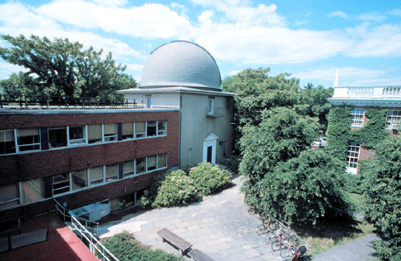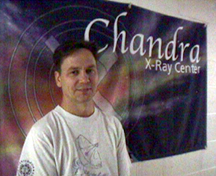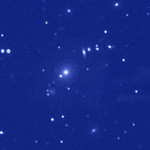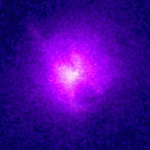An overview of the Chandra mission and goals, Chandra's namesake, top 10 facts.
Classroom activities, printable materials, interactive games & more.
Overview of X-ray Astronomy and X-ray sources: black holes to galaxy clusters.
All Chandra images released to the public listed by date & by category
Current Chandra press releases, status reports, interviews & biographies.
A collection of multimedia, illustrations & animations, a glossary, FAQ & more.
A collection of illustrations, animations and video.
Chandra discoveries in an audio/video format.
Disclaimer: This material is being kept online for historical purposes. Though accurate at the time of publication, it is no longer being updated. The page may contain broken links or outdated information, and parts may not function in current web browsers. Visit chandra.si.edu for current information.
Chandra People: Farewell to Brian McNamara
July 18, 2000 ::

The Chandra X-ray Center provides researchers with support that includes data processing and a science data archive. The Center is operated for NASA by the Smithsonian
Astrophysical Observatory and is situated on the campus of Harvard University.
|
Astrophysicist Brian McNamara, came to the Smithsonian Astrophysical Observatory in 1993. Brian is leaving the Chandra X-ray Center on July 18, 2000 to
accept a faculty position at Ohio University. He wants to try teaching; it's something that has been on his mind for a while. He has been working with the Chandra calibration group for seven years
and feels it's time to try something different.

Brian McNamara |
Brian McNamara
Q: What have you liked about SAO?
A: Great place to work, exciting, nice area to live, lots of great people
Q: What are your areas of research interest (i.e. stars, black holes, galaxies, clusters)?
A: Clusters of galaxies, properties of distant clusters, and cluster cooling flows
Q: Are you using Chandra images in your research?
A: Yes
 |
 |
| Hydra A -- Optical |
Hydra A -- X-ray |
Q: If so, Which image(s)?
A: Hydra A - recently published a paper onAbell 2597, to be observed in September, 2000. Also worked with Mike Wise, MIT/CXC, &, Craig Sarazin, U.VA, on other
Chandra observations of clusters. Also conduct observations with optical telescopes.
Q: How are these images changing your particular area of research? (Give an example.)
A: Major impact - can resolve cores of clusters; see detailed gas in the center; Chandra will have a big impact on understanding cooling flows because of high spatial
resolution!
Q: What would you suggest for future X-ray astronomy missions?
A: Faster, bigger, more expensive! 10 meter optics with 1/2 arc second mirrors would be great. Chandra has spoiled us, it would be difficult to go back to low
resolution.
Additional comments: "It's been a wonderful ride! The past year has been the most exciting in my career."
Now Brian can sit back, relax & enjoy the beautiful Chandra images.
Disclaimer: This material is being kept online for historical purposes. Though accurate at the time of publication, it is no longer being updated. The page may contain broken links or outdated information, and parts may not function in current web browsers. Visit chandra.si.edu for current information.








